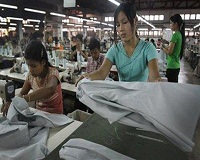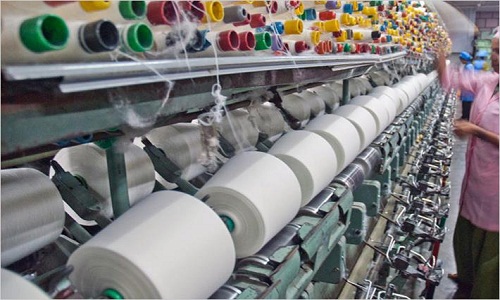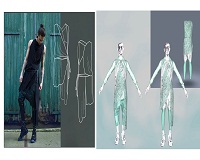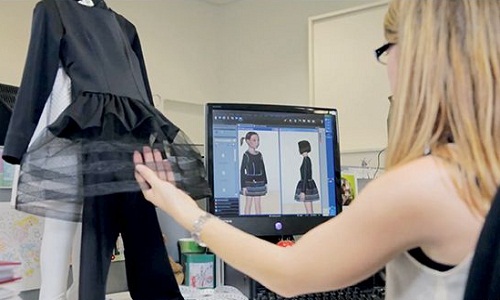FW
FTA negotiations between EU and the Philippines aim at eliminating or reducing tariff and non-tariff barriers to trade in agricultural products, manufactured goods and services and thereby facilitating trade flows, realizing the untapped potential and expanding foreign direct investment and leveling the playing field between private businesses and state owned enterprises.
Negotiations for an EU - Philippines FTA were launched in December 2015 seeking to build upon the Partnership and Cooperation Agreement signed between both partners in 2012 and ratified in January 2018.
There is potential scope for the EU - Philippines FTA to promote increases in bilateral trade in automotive products. Reduction or removal of tariffs on EU imports entering the Philippines would, in particular, improve competitiveness vis - à - vis Japan, Korea, China and Asean members that currently enjoy preferential market access, stimulating exports of passenger and commercial vehicles and parts and components.
In turn, the Philippines stands to benefit from potential increases in EU investment in the domestic automotive industry.
EU investments by larger automotive manufacturing enterprises could produce notable benefits to the Philippines by helping to facilitate the establishment of automotive manufacturing ecosystems or clusters. This, in turn, has implications for allied upstream industries that serve the sector, such as steel and chemicals.
Ethiopia has authorized cultivation of biotech crops.This includes approvals for environmental release of Bt cotton and research trials on biotech maze.
The country will start with two Bt cotton hybrids JKCH1050 and JKCH1947.
The country has identified cotton as a strategically important commodity crop to supply raw material for the rapidly growing textile sector and to generate thousands of jobs along the cotton sub-sector value chain.
Thirty years of research efforts to manage/control bacterial wilt of enset using conventional techniques could not succeed due to the absence of resistant clones in the genetic base of the crop.
There will be field trials on maize for drought tolerance and insect resistance.
Ethiopia’s textile industry is fast catching up with the likes of Vietnam, Indonesia, Cambodia and other Far East countries.
The prospects of this country advancing to a medium level of industrialization are very much within sight.
Adelco’s jet-air conveyor drying systems have a complex and efficient high-velocity hot-air curing chamber and exhaust system.
This is carefully balanced to ensure extremely stable temperatures and efficient exhaust of water and other chemical ink and pre-treatment systems.
Adelco, based in the UK, is a manufacturer of jet-air conveyor drying systems and oval automatic screen printing presses serving the international garment printing industry. It manufactures eco-friendly dryers and has sustainable facilities. The company aims to increase its output speeds and reduce print costs in the near future.
New hybrid digital systems are one of the latest trends in textile printing. In the digital garment printing sector, new hybrid digital systems provide extremely soft hand print results and are providing the combination of screen, digital, foil, flock and specialty inks all in one machine such as the new Adelco AD hybrid printer and the Matrix Oval screen print machine combination.
The digital garment printing sector is growing at 30 per cent annually, and is expected to grow further as it has taken more of the smaller run screen print market following recent reductions in print costs and increased print speeds of some digital garment printing systems. Most of the digital garment print market is for direct retail, majorly e-retail.
China is willing to expand imports from the US if the US is willing to meet it half way in trade negotiations.
For China boosting imports is an established strategy and China doesn’t want to escalate trade tensions with the US. The country has offered to boost purchases of US goods by about 25 billion dollars this year ahead of a mid-June deadline for imposing tariffs on Chinese imports.
The US has made reducing the deficit in goods trade with China and other nations one of its most important policy goals. While it has imposed tariffs on steel and aluminum imports from across the world, riling up allies in Europe, Asia and Canada, it has yet to enact any of the China-specific levies it has threatened.
China is offering the United States a package of trade concessions and increased purchases of American goods aimed at cutting the trade deficit with China.
The package includes elimination of Chinese tariffs already in place on US farm products including fruit, nuts, pork, wine and sorghum.
China wants the US to set aside threats of tariffs on Chinese goods and US investment restrictions on Chinese companies. China also wants a relaxation of US export controls that ban American firms from selling certain high-technology products to China.
China is set to return as a major cotton importer. Imports are expected to be around five million bales in 2017-18.
Once the world’s top cotton importer, China has seen its imports shrink from more than five million tons in 2011-12 to around a million tons last year due to its efforts to reduce state stockpiles of the fiber.
Now, after several years of auctions to low state stocks and with demand improving, buyers are expected to return to the market to supplement a production deficit at home.
Domestic cotton use is expected to increase by 1.5 million bales to 41.5 million bales in 2018-19.
Production growth in China has been lean due to limited farmland and high labor costs.
The plan is also likely related to pressure from the United States for higher imports of American farm goods. China has agreed to significantly increase its purchases of American goods and services, and cotton is one of the top agricultural exports of the United States.
The industry is also lobbying for more cotton supplies amid a hike in prices that could drive more manufacturers to use cheaper manmade fibers instead.
Production of viscose staple fiber will increase further in 2018, pulling down prices.
The cotton textile sector is expected to use four million tons of viscose fiber by 2019.
Manjima Bhattacharjya has just released the book Mannequin – Working Women in India’s Glamour Industry which shows a number of widespread issues in India’s fashion industry illustrated by in-depth interviews.
Recently released by the publishing house Zubaan, the new book contains 30 in-depth interviews with professionals in India’s fashion industry. From these interviews and her own research, Bhattacharjya posits that a major issue in the Indian fashion industry is that models’ work is not respected which often leads to exploitation and even sexual harassment.
An assumption would be that the economies of glamour would be organized, structured with well built systems, but a closer look shows in it characteristics of the informal sector – unskilled, with a floating labor population, relative ease of entry, operating on informal transactions, with no minimum remuneration, a chain of third parties facilitating work between two parities and the absence of any institutionalized body to oversee or regulate matters arising from conflict.
She also writes about some of the more positive aspects of the industry. Writing that fashion can allow people to step across class and caste boundaries, she does praise the industry for its creation of opportunities for social mobility.
India is the fastest growing market in the global fashion industry.
Apparel exporters in Bangladesh have to pay one per cent tax at source in the 2018-19 fiscal, instead of the current 0.7 per cent.
Last financial year the source tax was lowered to 0.7 per cent from one per cent.
The existing SRO would expire on June 30 this year.
The source tax collected from export proceeds of garments is roughly the revenue collected as income tax from the apparel sector.
Tax on export proceeds for other sectors will also be retained at one per cent in the next national budget due to the same reason.
Among other proposals the corporate tax rate will be increased for manufacturers and exporters of readymade garments to 15 per cent from the existing 12 per cent. Also the tax rate for green building certificate holding apparel companies will be fixed at 12 per cent from the existing ten per cent. The corporate tax rate for public limited garment companies will be 12.5 per cent.
Exporters suggest a tax of 0.50 per cent only on cutting and making instead of a source tax on export proceeds.
The garment industry is the country's main export earner. It is looking to hit 50 billion dollars in shipments by 2021.
"Shifts in how we make and consume clothing are stretching planetary resources to breaking point, feels Michael Stanley-Jones, Nairobi-based Programme Management Officer of UN Environment’s Poverty-Environment Initiative. As per a 2016 McKinsey report, clothing production has doubled, the average consumers’ apparel purchase has increased by 60 per cent, and the average usage duration of apparel has halved between 2000 and 2014. Another report by the Ellen MacArthur Foundation found the lost value of wasted apparel due to underuse and lack of recycling reached $500 billion annually."
 A recent McKinsey study shows the number of urban fashion consumers will double to two billion by 2025. Behind this rosy picture lies a startling reality of being the world’s second largest industrial polluter after oil and employs over 60 million workers throughout the global value chain. But growing awareness among consumers and the need to achieve anti-poverty Sustainable Development Goals (SDGs) by 2030 requires a dramatic transformation.
A recent McKinsey study shows the number of urban fashion consumers will double to two billion by 2025. Behind this rosy picture lies a startling reality of being the world’s second largest industrial polluter after oil and employs over 60 million workers throughout the global value chain. But growing awareness among consumers and the need to achieve anti-poverty Sustainable Development Goals (SDGs) by 2030 requires a dramatic transformation.
Shifts in how we make and consume clothing are stretching planetary resources to breaking point, feels Michael Stanley-Jones, Nairobi-based Programme Management Officer of UN Environment’s Poverty-Environment Initiative. As per a 2016 McKinsey report, clothing production has doubled, the average consumers’ apparel purchase has increased by 60 per cent, and the average usage duration of apparel has halved between 2000 and 2014. Another report by the Ellen MacArthur Foundation found the lost value of wasted apparel due to underuse and lack of recycling reached $500 billion annually.
Sustainable fashion solutions could include slower consumption, more environmentally responsible production, recycling of used fabrics, and promoting ‘durable, reusable, and eco-friendly’ fashion. Stanley intends to instill a stronger understanding of the underlying principles of ‘circular’ or no-waste economy as it applies to fashion, leading to action at each stage of the supply chain, beginning with the more sustainable sourcing of materials for textile and fabric design, and ending with exploration of possible alternative markets to source and distribute and recover clothing, during his participation at the upcoming Global Landscapes Forum digital summit – Fashion for the Sustainable Development Goals: Sustainable Supply Chains and Green Job Opportunities for Youth and Women.
‘durable, reusable, and eco-friendly’ fashion. Stanley intends to instill a stronger understanding of the underlying principles of ‘circular’ or no-waste economy as it applies to fashion, leading to action at each stage of the supply chain, beginning with the more sustainable sourcing of materials for textile and fabric design, and ending with exploration of possible alternative markets to source and distribute and recover clothing, during his participation at the upcoming Global Landscapes Forum digital summit – Fashion for the Sustainable Development Goals: Sustainable Supply Chains and Green Job Opportunities for Youth and Women.
UN Interventions
A High Level Political Forum on Sustainable Development is scheduled at the UN headquarters in New York this July, which will focus on UN plans to launch a Partnership for Sustainable Fashion. As Stanley says, agreeing on its scope and engaging with stakeholders are high on this agenda, naming the private sector, investors, researchers, farmers, activists, innovators, designers, educators, youth and the media among targeted stakeholders. This partnership will be part of UN Environment’s Poverty-Environment Action for Sustainable Development Goals 2018-2022 (PEA SDG), scheduled for launch in late 2018 as a programme for bringing pro-poor, environmentally sustainable management of natural resources into the heart of government decision-making.
The UN Framework Convention on Climate Change anticipates a 60 per cent increase in fashion industry’s greenhouse gas emissions and waste by 2030 if transformation towards a sustainable fashion industry fails to materialise soon. Pressing environmental issues in the fashion industry include controlling its water and energy footprint, facilitating closed loop recycling, promoting sustainable materials, halting overproduction and treating waste appropriately.
Freshwater resources are stressed by cotton production and consumption during processing. Producing and consuming countries’ water bodies both suffer from wastewater pollution. Energy consumption is heightened by the production of synthetic fibers, which are petroleum-based. Synthetic micro-fiber pollution is of increasing concern with micro-plastics being washed in water bodies and showing up in aquatic species at alarming rates, he added.
Driving change
With a view to drive change, incentives such as green finance will be required for stimulating the fashion industry’s transition towards sustainability, Stanley-Jones said. One promising area is soil carbon sequestration, techniques for increasing soil fertility and increasing carbon capture by farms and grazing lands. Reforms may be introduced through assessment of landscapes’ potential to serve as carbon sinks, and the awarding of credits to those field managers who implement them, he explained.
The UN Food and Agriculture Organization’s Ex-Ante Carbon-balance Tool (EX-ACT) is a cost-effective land-based accounting system, which estimates the impact of agriculture and forestry on a landscape’s carbon balance, comparing policy change and business-as-usual scenarios. It can be applied to evaluate the fashion industry’s value chain. Moreover, the Sustainable Apparel Coalition is best known for developing the Higg Index, which aims to holistically measure members’ sustainability in terms of product design, facility labour conditions, and brand environmental-social impacts, encouraging members to be transparent in sharing and comparing scores for public scrutiny. Currently, there is not yet a clear roadmap determining the fashion industry’s global sustainability standards, and the upcoming establishment of the UN Partnership for Sustainable Fashion will help pave the way.
 Myanmar textile factories have been facing the heat of higher labour wages as union officials still don’t feel that the new minimum wage of K4,800 is enough to cover the increasingly high cost of living, especially in urban areas where most factories are located, and have demanded K5,600 to K6,600. In lieu to this, employers argue that the increase is justified given the other challenges they face, including high land prices, frequent power outages and low labour productivity. In the wake of the challenging scenario, people fear that the increase in wages will negatively impact the competitiveness of Myanmar’s garment sector globally. Only time will tell whether the 25 per cent increase has dulled the competitive edge of Myanmar’s garment industry.
Myanmar textile factories have been facing the heat of higher labour wages as union officials still don’t feel that the new minimum wage of K4,800 is enough to cover the increasingly high cost of living, especially in urban areas where most factories are located, and have demanded K5,600 to K6,600. In lieu to this, employers argue that the increase is justified given the other challenges they face, including high land prices, frequent power outages and low labour productivity. In the wake of the challenging scenario, people fear that the increase in wages will negatively impact the competitiveness of Myanmar’s garment sector globally. Only time will tell whether the 25 per cent increase has dulled the competitive edge of Myanmar’s garment industry.
Myanmar textile factories have been facing the heat of higher labour wages as union officials still don’t feel that the new minimum wage of K4,800 is enough to cover the increasingly high cost of living, especially in urban areas where most factories are located, and have demanded K5,600 to K6,600. In lieu to this, employers argue that the increase is justified given the other challenges they face, including high land prices, frequent power outages and low labour productivity. In the wake of the challenging scenario, people fear that the increase in wages will negatively impact the competitiveness of Myanmar’s garment sector globally. Only time will tell whether the 25 per cent increase has dulled the competitive edge of Myanmar’s garment industry.
enough to cover the increasingly high cost of living, especially in urban areas where most factories are located, and have demanded K5,600 to K6,600. In lieu to this, employers argue that the increase is justified given the other challenges they face, including high land prices, frequent power outages and low labour productivity. In the wake of the challenging scenario, people fear that the increase in wages will negatively impact the competitiveness of Myanmar’s garment sector globally. Only time will tell whether the 25 per cent increase has dulled the competitive edge of Myanmar’s garment industry.
The true picture
Myanmar has the second lowest minimum wage in the region, with only the garment manufacturing giant Bangladesh paying its labour force less. While wages are comparatively low in Myanmar, the low productivity of its workers is the main reason that CMP garment factories have only trickled to Myanmar. A 2017 study by the Centre for Economic and Social Development found that productivity here is considerably lower than elsewhere in the region. In Thailand, Malaysia, and Vietnam, the garment sectors are about six times more productive than in Myanmar, while Cambodia and Laos are two to three times more productive. This means that despite Myanmar’s relatively low wage companies are likely to find it more profitable to remain in these other countries. On the other hand, China’s minimum wage has risen to a point where it is now cost-effective to operate in Myanmar, and there has been a steady migration of factories from China to Yangon.
The cache is that the significant wage rise doesn’t necessarily guarantee any increase in productivity, which can result in Myanmar losing the competitive advantage in order to attract foreign investment in the garment industry. In that scenario, manufacturers may opt for moving to a neighbouring country with higher productivity, such as Thailand, or one with a lower wage. Bangladesh has increasing chance of luring companies due to its lower minimum wage and higher productivity.
Retaining competitiveness
Currently many garment factories in Myanmar use a system of bonuses to increase productivity and attendance, providing labour with a monetary incentive to meet production targets. While many of the larger factories are earning enough to accommodate the increase in minimum wage and maintain their bonus system, this scenario doesn’t work well for locally owned small and medium-sized factories that are mainly involved in sub-contracting or very low-end CMP work. They will probably be forced to decrease the labour incentives offered to workers for meeting production targets in order to maintain wage costs.
The country’s immediate focus should be on reducing the costs of doing business to a level comparable to Myanmar’s regional counterparts to incentivise foreign investment in Myanmar’s garment industry. Myanmar’s government has already started taking steps to reduce the costs of doing business through tax breaks and infrastructure improvements. The Ministry of Electricity and Energy recently announced plans to double Myanmar’s power generation capacity by 2022 to address one of the biggest headwinds for garment factory operations. Poor transport infrastructure is another major burden for factory owners and the Ministry of Transport and Communications is working with the Japan International Cooperation Agency to ease congestion and improve access to Yangon port.
Another option that has been successful in China and Vietnam, is a regional minimum wage that reflects the different cost of living in each state and region. In Yangon where the cost of living is very high, a minimum wage of K4,800 a day may not be enough for workers to support themselves without also undertaking a large amount of overtime. However, in a city such as Pathein, where the cost of living is lower, it might be feasible to have a lower minimum wage. A regional minimum wage could potentially attract garment factories to industrial zones in smaller cities once the necessary infrastructure is built.
"Although many fashion and apparel companies have adopted tools, such as Adobe Creative Suite and PDM systems within their product development process, the implementation of 3D virtual prototyping tools have been met with resistance. The reasons vary from company to company but they must be addressed as the immense number of physical samples that are produced and shipped across the globe during the product development process, necessitates new, sustainable practices based in innovative tools."
 Although many fashion and apparel companies have adopted tools, such as Adobe Creative Suite and PDM systems within their product development process, the implementation of 3D virtual prototyping tools have been met with resistance. The reasons vary from company to company but they must be addressed as the immense number of physical samples that are produced and shipped across the globe during the product development process, necessitates new, sustainable practices based in innovative tools.
Although many fashion and apparel companies have adopted tools, such as Adobe Creative Suite and PDM systems within their product development process, the implementation of 3D virtual prototyping tools have been met with resistance. The reasons vary from company to company but they must be addressed as the immense number of physical samples that are produced and shipped across the globe during the product development process, necessitates new, sustainable practices based in innovative tools.
3D virtual prototyping for apparel design and product development offers the opportunity for fashion and apparel companies to streamline their current process. Moreover, it provides a means of communication centered around a single, digital asset that can be used by all departments, vendors, and manufacturers. Even with these benefits, there are common points of resistance that exist in the fashion and apparel industry that hinder the adoption of 3D virtual prototyping:
3D not a gimmick
While 3D modeling is standard practice within creative departments in automotive, aerospace, architecture, and industrial design, 3D modeling is stereotyped as a tool specifically for computer-generated imagery. It is frequently associated with video games and animated films, inciting negative reactions when proposed as a tool for the fashion industry.
stereotyped as a tool specifically for computer-generated imagery. It is frequently associated with video games and animated films, inciting negative reactions when proposed as a tool for the fashion industry.
Yet, if we examine the evolution of 3D modeling, specifically 3D cloth simulation, garments in recent video games and animated films are intricate, drape dynamically, and animated characters wear multiple outfits made of different materials throughout an entire film. Even in films with human actors where 3D garments are used, it is difficult to tell when the garment is real or digital. 3D cloth simulation has come a long way over the past decade, and when paired with the right hardware, accurate virtual representations of designs can be achieved within a matter of minutes.
3D is not a gimmick. Even though 3D cloth simulation is used by other industries, when this technology incorporates features that can translate a virtual prototype into physical reality, designs can be clearly communicated, the number of physical samples per style can be greatly reduced, and more time can be spent on designing better, more creative products for your consumers.
Fear of change
Considering 3D virtual prototyping often elicits negative feelings from those involved in product development and design. It is a technology that challenges their current day-to-day process, and the change that comes with adopting this type of innovative technology can be extremely daunting.
This fear or resistance is rooted in a lack of trust in 3D technology — believing it cannot be applied to visualise a variety of garment categories, fabrics, or design details. In addition, new technology is generally applied towards the end of a product’s lifecycle. It is now common to experience retail environments where augmented reality and virtual try-on mirrors are being used. This ultimately overshadows the benefits of 3D technology and how it can innovate the entire process, beginning with the design phase.
Indeed 3D garment simulation has improved tremendously and is reliable in visualizing designs before a physical prototype is made. The technology has reached a tipping point where the virtual expression of various garment categories, design details, and fabrics is no longer limited. It can be used to create highly realistic images that can extend to marketing and e-commerce.
However, rolling out 3D virtual prototyping does not have to be an abrupt, sudden end-to-end change. Focusing on a few garment categories or styles can be a great way to prove that 3D works for your company. This can be achieved by working with a technology partner to complete a proof of concept, or with existing vendors and manufacturers to pilot a new 3D process around a small, but specific number of styles. The most important thing is to start in the early stages of apparel design and product development and grow the 3D ecosystem from there. Many manufacturers have already adopted 3D virtual prototyping tools as well, and they can play a key role in easing your company into a product development process that includes 3D.
No Time to learn new software
The fast-pace of the fashion calendar coupled with the demand for shorter lead times makes it difficult to set aside time to incorporate new technology. The work hours of those involved in product development process are spent chasing samples, attending multiple fit sessions for numerous styles, and constantly updating flat sketches and tech packs.
Although many have come to understand that 3D can drastically change the way they work, the current state of the product development process makes it difficult for them to dedicate even a fraction of their work hours to learning and applying 3D.
There are a few options available that have been put into practice by companies to address this issue. Certain companies have opted to establish teams that specifically create 3D garments, as well as investigate other technologies that will improve the overall product development process. Academic institutions are also a great resource for new talent, and many schools are beginning to incorporate 3D solutions into their design courses.
Another option would be to find the right people within the company who are open to 3D, reassign some of their tasks, and provide the time and space for them to develop their skills in 3D, within a manageable timeframe.
Resistance to implementing 3D virtual prototyping exists within the fashion and apparel industry, but many companies are adopting 3D and reaping benefits. They utilise 3D garments generated from 3D virtual prototyping tools to increase speed to market and obtain valuable consumer data analytics. Sample accuracy has increased with their network of vendors and interdepartmental communication has improved. Ultimately, 3D is a tool that serves to innovate how design is communicated across all stages of a product’s lifecycle — a clear visual representation of silhouette, drape, and design.












